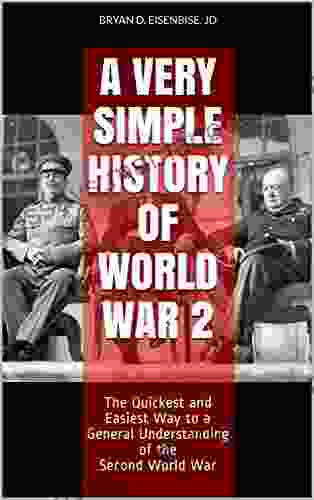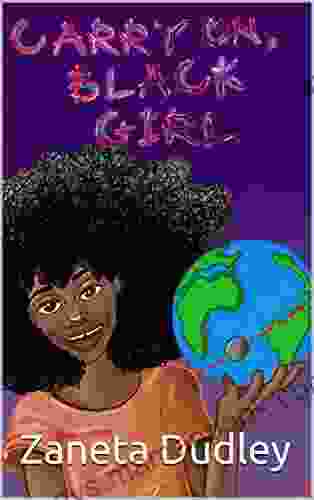World Wars: A Tumultuous Period in Human History

The World Wars, spanning from 1914 to 1945, marked a tumultuous period in human history, characterized by unprecedented destruction, innovation, and social upheaval. These global conflicts involved the major powers of the world, with millions of lives lost and nations crumbling under the weight of war. In this in-depth article, we delve into the fascinating yet harrowing events of the World Wars, uncovering their complexities, consequences, and lasting impact on the course of human civilization.
Key Contributors to the Outbreak of World War I
The tinderbox of Europe in the early 20th century ignited into the First World War, which erupted on July 28, 1914. Several factors contributed to the war's outbreak:
Imperialism and Nationalism: Rivalries between European powers intensified as they sought to expand their empires and assert their national prestige.
4.2 out of 5
| Language | : | English |
| File size | : | 2721 KB |
| Text-to-Speech | : | Enabled |
| Enhanced typesetting | : | Enabled |
| Word Wise | : | Enabled |
| Print length | : | 352 pages |
| Lending | : | Enabled |
| Screen Reader | : | Supported |
Military Alliances: A complex web of alliances, including the Triple Alliance (Germany, Austria-Hungary, Italy) and the Triple Entente (France, Russia, United Kingdom),created a domino effect, drawing nations into the conflict.
Arms Race: A relentless arms race had fostered a climate of fear and mistrust among European powers, leading to a heightened state of military preparedness.
Assassination of Archduke Franz Ferdinand: The assassination of Archduke Franz Ferdinand, heir to the Austro-Hungarian throne, on June 28, 1914, by a Serbian nationalist served as the catalyst for the war.
Major Events and Campaigns of World War I
The First World War was characterized by intense trench warfare, technological advancements, and widespread suffering.
Trench Warfare: Soldiers endured the harsh conditions of trenches, dug to protect them from enemy fire, which resulted in countless casualties and psychological trauma.
Technological Advancements: The war witnessed the of new weapons and technologies, such as machine guns, tanks, and chemical warfare, which had a devastating impact on the battlefield.
Eastern and Western Fronts: The war was fought primarily on two main fronts: the Western Front (France and Belgium) and the Eastern Front (Eastern Europe).
Alliances and Collaborations: Germany and its allies faced off against the Allied Powers, which included France, Russia, the United Kingdom, and later the United States.
Outcomes and Legacy of World War I
The First World War concluded in 1918 with the Allied victory. The war's aftermath had profound consequences:
Casualties and Human Toll: The war claimed the lives of millions of soldiers and civilians, leaving an indelible mark on families and communities worldwide.
Territorial Changes: The war resulted in significant territorial changes, with the collapse of the Austro-Hungarian and Ottoman empires, and the creation of new nation-states.
League of Nations: The aftermath of the war led to the formation of the League of Nations, an international organization aimed at preventing future conflicts. However, it failed to prevent the outbreak of another world war.
Interwar Period and the Rise of Fascism
The interwar period between the two world wars was marked by political instability, economic turmoil, and the rise of totalitarian ideologies.
Economic Hardships: The global economy suffered greatly during the interwar period, leading to unemployment, poverty, and political unrest.
Social Unrest: The war had caused widespread social and cultural upheaval, leading to a loss of traditional values and a search for new ideologies.
Rise of Fascism: In several European countries, particularly Italy and Germany, fascist movements gained popularity, offering simplistic solutions to the challenges of the time.
Causes of World War II
The Second World War, which began on September 1, 1939, was the result of a complex combination of factors:
Treaty of Versailles: The harsh terms of the Treaty of Versailles, imposed on Germany after World War I, created resentment and fueled a desire for revenge.
Rise of Nazi Germany: Adolf Hitler and his Nazi party exploited the dissatisfaction and economic problems in Germany to gain power and pursue aggressive expansionist policies.
Japanese Imperialism: Japan, seeking to expand its empire, invaded Manchuria in 1931 and engaged in hostilities with China.
Failure of Appeasement: European powers, in an attempt to avoid another war, pursued a policy of appeasement, which ultimately emboldened aggressors like Hitler.
Major Events and Campaigns of World War II
World War II was the deadliest conflict in human history, involving over 60 nations and spanning across continents.
Invasion of Poland: Germany's invasion of Poland on September 1, 1939, marked the beginning of the war.
Blitzkrieg: Germany's lightning-fast military strategy, known as Blitzkrieg, enabled its initial victories in Europe.
Battle of Britain: The Royal Air Force's heroic defense against German air attacks in 1940 marked a major turning point in the war.
Attack on Pearl Harbor: Japan's surprise attack on the U.S. naval base at Pearl Harbor on December 7, 1941, brought the United States into the war.
Eastern Front: The war on the Eastern Front between Germany and the Soviet Union was characterized by brutal fighting and immense casualties.
D-Day: The Allied invasion of Normandy, France, on June 6, 1944, opened a second front against Germany in Western Europe.
Atomic Bombings: The United States dropped atomic bombs on the Japanese cities of Hiroshima and Nagasaki in August 1945, leading to Japan's surrender and the end of the war.
Outcomes and Legacy of World War II
World War II ended in 1945 with the Allied victory. The war's aftermath had a transformative impact on the world:
Casualties and Destruction: The war resulted in the deaths of tens of millions of people, leaving a trail of devastation and suffering.
Territorial Changes: The war led to significant territorial changes, including the redrawing of European borders and the decolonization of many former colonies.
United Nations: The war's aftermath saw the establishment of the United Nations as a successor to the League of Nations, with the aim of preventing future conflicts.
Cold War: The post-war era was marked by the Cold War, an intense rivalry between the United States and the Soviet Union that lasted several decades.
The World Wars stand as a somber testament to the devastating consequences of war and the resilience of the human spirit. These global conflicts shaped the course of history, leaving an enduring legacy of sacrifice, suffering, and the enduring pursuit of peace. By understanding the complex causes, major events, and outcomes of the World Wars, we strive to learn from the lessons of the past and to work towards a more just and equitable future.
4.2 out of 5
| Language | : | English |
| File size | : | 2721 KB |
| Text-to-Speech | : | Enabled |
| Enhanced typesetting | : | Enabled |
| Word Wise | : | Enabled |
| Print length | : | 352 pages |
| Lending | : | Enabled |
| Screen Reader | : | Supported |
Do you want to contribute by writing guest posts on this blog?
Please contact us and send us a resume of previous articles that you have written.
 Top Book
Top Book Novel
Novel Fiction
Fiction Nonfiction
Nonfiction Literature
Literature Paperback
Paperback Hardcover
Hardcover E-book
E-book Audiobook
Audiobook Bestseller
Bestseller Classic
Classic Mystery
Mystery Thriller
Thriller Romance
Romance Fantasy
Fantasy Science Fiction
Science Fiction Biography
Biography Memoir
Memoir Autobiography
Autobiography Poetry
Poetry Drama
Drama Historical Fiction
Historical Fiction Self-help
Self-help Young Adult
Young Adult Childrens Books
Childrens Books Graphic Novel
Graphic Novel Anthology
Anthology Series
Series Encyclopedia
Encyclopedia Reference
Reference Guidebook
Guidebook Textbook
Textbook Workbook
Workbook Journal
Journal Diary
Diary Manuscript
Manuscript Folio
Folio Pulp Fiction
Pulp Fiction Short Stories
Short Stories Fairy Tales
Fairy Tales Fables
Fables Mythology
Mythology Philosophy
Philosophy Religion
Religion Spirituality
Spirituality Essays
Essays Critique
Critique Commentary
Commentary Glossary
Glossary Bibliography
Bibliography Index
Index Table of Contents
Table of Contents Preface
Preface Introduction
Introduction Foreword
Foreword Afterword
Afterword Appendices
Appendices Annotations
Annotations Footnotes
Footnotes Epilogue
Epilogue Prologue
Prologue Adam Smith
Adam Smith Theresa Lola
Theresa Lola Robert Nystrom
Robert Nystrom Barbra Annino
Barbra Annino Ingersoll Lockwood
Ingersoll Lockwood Vidya Vasudevan
Vidya Vasudevan Sarah Jefford
Sarah Jefford Pierre Pureur
Pierre Pureur Tara Neilson
Tara Neilson Writing Axis
Writing Axis Helen Winter
Helen Winter Junji Ito
Junji Ito Grace Daltrey
Grace Daltrey Tasmin Hansmann
Tasmin Hansmann Lisa Stice
Lisa Stice Kathy Stanton
Kathy Stanton Miranda Leigh
Miranda Leigh Pamela Ellgen
Pamela Ellgen Sean Starr
Sean Starr Laura D Adams
Laura D Adams
Light bulbAdvertise smarter! Our strategic ad space ensures maximum exposure. Reserve your spot today!
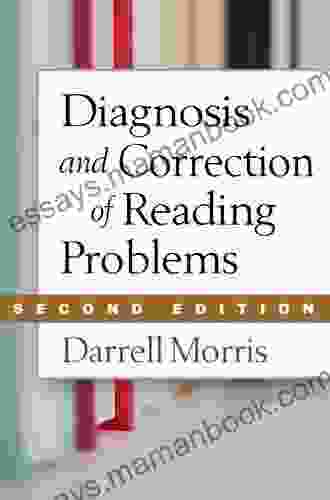
 Bruce SnyderDiagnosis and Correction of Reading Problems, Second Edition: A Comprehensive...
Bruce SnyderDiagnosis and Correction of Reading Problems, Second Edition: A Comprehensive... Will WardFollow ·15.4k
Will WardFollow ·15.4k Gilbert CoxFollow ·5.4k
Gilbert CoxFollow ·5.4k John SteinbeckFollow ·3.5k
John SteinbeckFollow ·3.5k W.B. YeatsFollow ·19.8k
W.B. YeatsFollow ·19.8k Israel BellFollow ·17.5k
Israel BellFollow ·17.5k Beau CarterFollow ·5.6k
Beau CarterFollow ·5.6k Gil TurnerFollow ·7.4k
Gil TurnerFollow ·7.4k Corbin PowellFollow ·14.5k
Corbin PowellFollow ·14.5k

 Dean Butler
Dean ButlerBlack Widow 2024: A Comprehensive Guide to Kelly...
In 2024, Marvel...
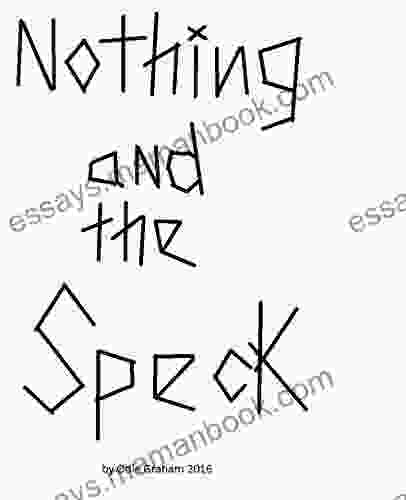
 Gage Hayes
Gage HayesNothing and the Speck: An In-Depth Analysis of Yana...
Yana Toboso's works, particularly the manga...
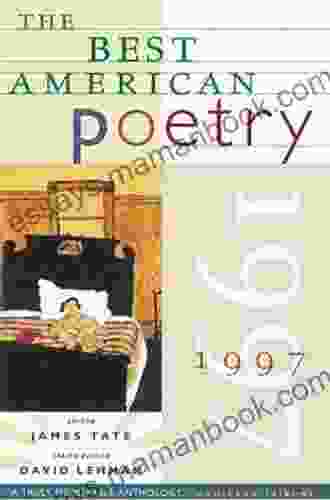
 Stan Ward
Stan WardThe Best American Poetry 1997: James Tate
The Best American Poetry...

 Corey Green
Corey GreenThe Chance of Home: Exploring the Poetic Landscape of...
Immerse yourself in the evocative world of...
4.2 out of 5
| Language | : | English |
| File size | : | 2721 KB |
| Text-to-Speech | : | Enabled |
| Enhanced typesetting | : | Enabled |
| Word Wise | : | Enabled |
| Print length | : | 352 pages |
| Lending | : | Enabled |
| Screen Reader | : | Supported |


